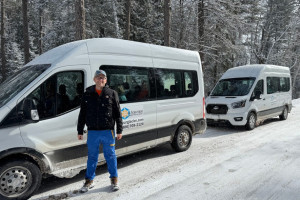In 1805 Lewis and Clark ventured through the Missoula Valley. In 1860 Europeans finally settled in the area. Before white pioneers arrived, Western Montana was where the Salish, Pend d'Oreille, and Kootenai tribes lived.
Missoula sits in an ancient, glacial lakebed that is cut through by the Clark Fork River. The Bitterroot River feeds into the Clark Fork on the southwest edge of town. The Big Blackfoot River, which is quite famous, meets the Clark Fork a bit east of town.
The University of Montana and the Northern Region headquarters for the U.S. Forest Service are located in Missoula. Retail industries are booming here, especially as logging is starting to dissipate as a major source of income in the town.
Each year as the college students depart, tourists begin to arrive in droves. Missoula is located 3 hours south of Glacier National Park and 3-and-a-half hours west of Yellowstone National Park. The town is set amidst scenic national forests and beautiful wilderness areas. It's a great place to visit in the summer and the winter.
Missoula was the birthplace of Jeanette Rankin - the country's first Congresswoman. She grew up here in the late 1800s, and was elected to Congress before women had the vote just before the commencement of WWI. She served one term and was re-elected to Congress before the start of WWII. She was the only legislator to vote against entering both wars.
Today the town remains a hotbed for politics. The economy relies mainly on retail trade, as people from all around come to Missoula to shop and use medical and other professional services.



